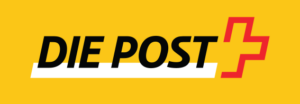OPERATIONS
We represent the freight stakeholders and in this chapter we focus on the use of infrastructure, i.e. transport. We advocate free operation on the last mile. In favour of fair competition, we want to use the strength of all modes of transport and combine them optimally. Because in this way, the route becomes shorter – and more economical – for each individual.
Actors in the field of operation

Freight railway undertakings
Manufacturer/holder of rolling stock (private wagon rental companies)
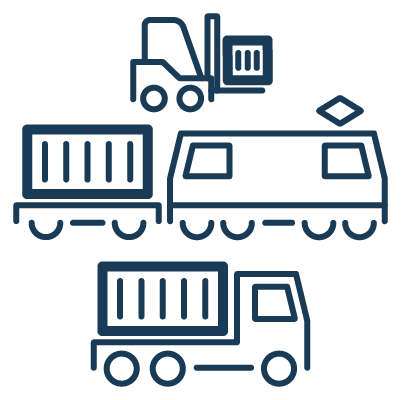
Operators

Timetables (Swiss capacity allocation body TVS)
Informative
The future of rail freight transport in the countryside
- Blog post «Zukunft Schienengüterverkehr in der Fläche»
- Position paper to the KVF‑N, 22.6.2022
- Report of the Federal Council on the future direction of surface rail freight, 31.3.2022
Emission limit values for noise
Freight transport by rail
- Freight transport by rail concept 2017
- Report on freight transport by rail 2017
- Hearing Cargo Forum Switzerland on the subject of freight transport by rail 2017
Driving service regulations
- Statement on the driving service regulations in the 2020 amendment cycle
- Driving service regulations from 1.7.2020
- Implementing provisions for the train service regulations, SBB regulations
Operating regulations for sidings
The responsibility for safe operation lies with the responsible company. The corresponding operating regulations must be drawn up by the siding operator.
The VAP provides auxiliary means to its members. We provide support with legal and administrative tasks. Contact us directly for clarification, advice or audit support.

The future belongs to combined transport
What future do freight railways have in Switzerland? The VAP discusses these and other questions in a double interview with Peter Knaus, Head of Graubünden Freight Railway at the Rhaetian Railway (RhB), and Peter Luginbühl, Head of Operations at the Matterhorn-Gotthard Railway (MGBahn). In the debate, the experts talk about in-house operation and outsourcing, economic viability, innovation, competition and making rail freight transport more flexible.
Mr Luginbühl, rail freight logistics is outsourced on the Matterhorn-Gotthard Railway. Why is that?
Peter Luginbühl: As a company that operates primarily in the tourism sector, our main focus is on passenger mobility. Freight transport accounts for around 2% of the overall result in the public service sector. In 2011, the decision was made to concentrate on rail transport for freight transport. We have placed the upstream and downstream interfaces with the customer under the responsibility of Alpin Cargo AG as the overall logistics service provider. This allows us both to concentrate on our core competences: We are responsible for transport by rail, Alpin Cargo for the interface to the customer, i.e. also for the last mile. In Zermatt, for example, fine distribution is carried out using electric vehicles and horse-drawn carriages.
Peter Luginbühl, Head of Operations Matterhorn-Gotthard Railway
To what extent is this outsourcing an advantage?
Peter Luginbühl: This operator model has proved its worth for our starting position with a limited size and a fairly manageable contribution of freight transport to the overall result. It is also ideal from the freight customers’ point of view.
Would you outsource again?
Peter Luginbühl: Yes. Our operator model works very well. Nevertheless, we question it every five years and carry out a site assessment. We are only about a quarter of the size of the RhB’s Graubünden freight railway. So it doesn’t make sense to run it ourselves.
Mr Knaus, you operate rail freight transport yourself. What does this in-house operation look like?
Peter Knaus: We have orders from the canton of Graubünden to provide the public service, among other things. In the past, transport companies were literally forced onto the railway. Things are different today. We use the railway for what makes economic sense. This creates a win-win situation for us and our customers. For short distances or the last mile, we work together with road haulage companies. We regularly exchange information with these business partners at our annual transport platform and through personal contact.
What disadvantages do you see with your model?
Peter Knaus: An enormous amount of effort for our own rolling stock. Here’s an example: our entire fleet of around 320 carriages is equipped with vacuum brakes. Now, for strategic reasons, RhB has decided to switch all carriages to air brakes by 2040. According to our 2023–2030 strategy, we will modernise half of the fleet and renew the other half, as this is the more economical option.
What key criteria do you use to select the mode of transport?
Peter Luginbühl: We are convinced that although rail is ideal for all goods, it is not equally suitable for all of them. We currently transport around 40 to 50% of goods between Visp and Zermatt by rail. Rail’s strengths over road lie in its large capacities, high availability and reliability. We can guarantee the exact arrival time in Zermatt 99% of the time. With every mode of transport, you have to weigh up which is the best economic and ecological modal split.
Peter Knaus: Lorries are also becoming increasingly ecological. This in turn means that the roads will continue to be well frequented. The canton is happy for every lorry that gets off the road so that there is less congestion in private transport.

Peter Knaus, Head of Freight Transport at Bündner Güterbahn
Which products are more suitable for rail transport, and which still have potential?
Peter Knaus: Long-distance goods that depend on punctuality and reliability, such as foodstuffs. Likewise letter and parcel post and general cargo that needs to be delivered on time. Scheduled freight, which we transport from 4.00 am. Rubbish and recycling material must be transported within 24 hours. Building materials such as cement or salt are also very suitable for rail freight transport. We also transport an extremely large amount of round timber, around 95%, to Tirano. We are predestined for this, as customs clearance is also more economical than with a lorry. We transport most goods in combined transport, except for logs and general cargo. Combined transport has great potential for the future. I see potential for pellet transport in our area.
Peter Luginbühl: We have a very similar product focus to RhB. But we don’t transport wood. We also transport large quantities of heating oil. We also transport a lot of luggage for the tourist destination of Zermatt. Over the last few decades, consignments have become smaller, not least due to the mail order business.
Reliability and punctuality: what do you think?
Peter Luginbühl: As a small railway, we can guarantee stability and punctuality extremely well. 95% or more of our customers are extremely satisfied with our reliability. The situation is very different in the European or Swiss-wide freight railway system. Punctuality is a huge problem here. The industry still needs to improve a lot and become a more reliable partner.
Peter Knaus: I agree with that. We are extremely punctual, especially when it comes to food transport or scheduled freight. When we work with the big players, it becomes more challenging to meet the desired deadlines. For the WEF transport project, for example, we were reliant on suppliers from the standard gauge. If they don’t arrive on time in Landquart, we can’t deliver the containers to Davos on time either. This poses a major problem for our customers, as time slots allocated at the WEF have to be adhered to.
What developments do you recognise in production?
Peter Luginbühl: At the moment we still have mixed production, whereby we mainly work with block trains. We are increasingly moving away from attaching freight wagons to passenger trains. For one thing, the new multiple-unit trains and the capacities of our track systems no longer meet these requirements. We are also losing the logistics space for transhipment. We will increasingly concentrate on block goods trains.
Peter Knaus: We run 52 freight-only trains a day on the main network. The new trains with automatic coupling are only designed to move themselves. The sheer number of goods trains means that we retain a certain degree of flexibility. We have fixed annual timetables for scheduled freight, everything is planned through. We only run mixed services towards Arosa and Bernina, as there are not enough train paths for pure goods trains.
Speaking of train paths: What challenges do you face here?
Peter Knaus: During the day, regional passenger transport sets the pace for us. We have to adapt to this. We also have to adapt to prestige trains such as the Glacier and Bernina Express. Our most flexible time slots are from 4.00 am to 6.30 am. From 9.00 p.m. there is mainly construction work going on, so we can only operate to a very limited extent. The RhB and the canton support us well in the track issue and involve the various interest groups.
Peter Luginbühl: I see four challenges with the railway lines. Firstly, economic efficiency. Our desired train paths are often occupied by tourist trains, which are more economical. Secondly, economic viability. We have enormous investments and major financing issues. We make an important contribution to the security of supply in our region. Thirdly, flexibility through speed. We cannot react as quickly to changes in supply as a transport company can. Fourthly, innovative strength. We still produce in the same way as we did 30 years ago. I am curious to see whether we will actually be able to transform through digitalisation.
What best practice cases are there that you and others can learn from?
Peter Luginbühl: I see fine distribution over the last mile as a successful model. Our partner does it in such a way that more and more customers come, precisely because he is so flexible. And finally, I consider the disposal of rubbish to be an exciting business model from an ecological and economic point of view.
Peter Knaus: In my opinion, a good example is the conversion of beverage transport. The Valser company has been transporting its beverages from Vals via Ilanz to Untervaz for over 40 years. The early morning transhipment at the ramp in Ilanz caused a lot of noise emissions. This gave rise to the idea of using swap bodies for transshipment. Together with the parent company Coca-Cola and the canton, we procured suitable swap bodies. These have proved very successful. In the foreseeable future, we will even be transporting them using electric lorries with trailers. In dialogue with the canton and the police, we have obtained a special permit for trailers for the Schnaus-Ilanz route. . The only sticking point at the moment is the HVF reimbursement in combined road-rail transport. This refund is still linked to the LSVA. In future, it must be linked to combined transport. The legal framework still needs to change.
Which innovations will prove their worth in rail freight transport in the coming years?
Peter Knaus: I consider power packs, i.e. batteries that are mounted on the freight wagons, to be a sustainable solution. These can be used as an energy supplier for refrigerated containers, but also for construction work in the tunnels. We have even equipped sliding wall wagons with modern Powerpacks. We have also made great progress in the area of freight wagon tracking. We now know where the freight wagons are, how fast they are travelling, what their battery levels are, what the temperatures are in the refrigerated containers, etc. We can utilise this data in a digital scheduling system. We have also already thought about an Uber system for general cargo. That would be very innovative, but the sticking point here is the production costs and suitable partners.
Peter Luginbühl: Rail freight transport will still be around in 30 to 50 years’ time. To achieve this, we need to move away from the current rigid systems. Starting with the wagon superstructures, through rigid logistics processes in freight handling or wagon management, to wagon flexibility. There is potential everywhere to meet future requirements with innovations.
What does it take for such innovations to be realised?
Peter Knaus: I am a member of the FOT expert committee for technical innovations. The federal government is very open here and supports innovations that bring long-term benefits. The canton of Graubünden is also very open to innovations and supports them to the best of its ability if they bring economic and ecological benefits.
Peter Luginbühl: In regional passenger transport, it took pressure from a private economic player like Google to get things moving. That would probably be good for us too. It would be exciting if a market third party were to build up pressure.
What do you think about Europe-wide integrated data platforms?
Peter Knaus: An exciting starting point for the players in freight transport, and not just on the railways. The development of this is challenging, and I’m not sure whether everyone would make their data available. Currently, our customers can use tracking to see where the loading equipment is currently located. This allows a mineral oil transport customer, for example, to organise their and our scheduling more efficiently. I would welcome greater consistency with our customers, especially when it comes to timber loading.
Peter Luginbühl: We would have to equip the wagons with tracking devices. Only then could we take further steps towards data exchange, including across modes of transport. We at MGBahn are less concerned about this because we have a local focus.
Where do you see the greatest levers for advancing rail freight transport?
Peter Luginbühl: In making the rail freight system more flexible. We will never be as flexible as road transport. But we must be able to react more quickly to customer needs and play to the strengths of the railways. The potential for rail transport is huge. The pressure to shift transport to rail will come of its own accord.
Peter Knaus: You certainly have to differentiate between metre gauge and standard gauge. We have a manageable network with metre-gauge tracks. Compared to the SBB, we can react very quickly. A planned changeover of two weeks is quick compared to SBB – and slow compared to a road transport company. The latter switches within days. The more money we have, the faster we can invest in traction units and freight wagons or modernise the fleet and the more flexibly we can react to the wishes of our customers.
To what extent would more competition among the rail freight companies change the dynamics of the rail freight market?
Peter Luginbühl: More competition, more dynamism. However, the entry threshold for new players in our market is very high. If you want to operate a freight railway, you need a compliant traction unit and expensive rolling stock. That’s a different matter from buying a lorry for a few hundred thousand francs. Examples such as Railcare or Swiss Post show that competition leads to innovation and price pressure.
Peter Knaus: Competition is good and encourages development. Those responsible at Railcare have a very good transport logistics concept, they combine road and rail with their own fleet. Competitor companies on the railway are also dependent on free train paths. They cannot simply set off when they are fully loaded. In terms of price, small rail freight operators have the advantage that they have to factor in lower overheads.
What do you think of the VAP and what would you recommend to our association?
Peter Knaus: I have always had good contact with Secretary General Frank Furrer. I was in charge of the transport logistics project at the regional parcel centre in Untervaz. I worked very closely with the VAP. He was an independent and very valuable project member. I find the dialogue with Frank Furrer, Jürg Lütscher and other VAP representatives, who bring in a shipper’s perspective, constructive and exciting.
Peter Luginbühl: I didn’t know that this association existed until recently. My recommendation would be for you to make your association better known among freight transport companies. I think it’s great what the VAP is doing.
What hasn’t been said yet?
Peter Luginbühl: This discussion has given me valuable ideas, thank you for that.
Peter Knaus: Thank you for inviting us to this interview and giving us the opportunity to present ourselves.
|
About Peter Knaus and the Graubünden freight railway Peter Knaus is Head of Freight Transport at the Graubünden Freight Railway of the Rhaetian Railway (RhB). He also represents the narrow-gauge railways on the Freight Transport Commission (KGV) of the Swiss Association of Public Transport (VöV) and is a member of the Rail Freight Transport Advisory Group of the Federal Office of Transport (BAV). Under the umbrella of RhB, the Graubünden Freight Railway offers a wide range of transport solutions for companies and private individuals in Graubünden. With its diverse fleet of wagons – including container wagons, sliding wall wagons and tank wagons – it transports goods of all kinds. The service points cover the whole of Graubünden and include important industrial centres, logistics centres and agricultural businesses. As a result, the Graubünden freight railway guarantees a comprehensive supply of goods throughout the region and is an indispensable part of the regional logistics infrastructure. |
|
About Peter Luginbühl and the Matterhorn-Gotthard Railway Peter Luginbühl has been Head of Operations at the Matterhorn-Gotthard Railway since 2017. The qualified controller previously worked for several years as Head of Corporate Development HR at SBB. The Matterhorn-Gotthard Railway operates its freight transport with Alpin Cargo AG, a subsidiary of the Planzer Group. It offers a wide range of services for local businesses. These include goods handling, warehouse logistics and transport by both rail and road. The supply of mineral oil is another important service. Alpin Cargo not only serves companies on the last mile, but also private individuals. They can use its services for removals, the storage of household goods and home deliveries with assembly and e‑transport. |

Gotthard Base Tunnel (#9): Avoid shifting traffic back to the road
The goods train derailment on 10 August 2023 caused serious damage to the Gotthard Base Tunnel. SBB therefore intends to massively reduce the capacity of sustainable rail freight transport in favour of leisure traffic at weekends with the timetable change on 10 December 2023. This could lead to a shift of up to 15% of rail freight back onto the road.
This is the issue:
- New timetable concept cancels freight transport routes
- Statutory modal shift target jeopardised
- Alternative for passenger transport available
- NEAT gradually misused for other purposes
- No dialogue at eye level
- Avoiding a shift back to road transport together
New train path concept cancels freight transport routes
According to the media update of 2 November 2023, SBB assumes that the Gotthard Base Tunnel will not be fully available for passenger and goods trains again until September 2024. The repair work is likely to take far longer than originally expected. SBB officials have announced that with the December timetable change, significantly more and faster passenger trains will be travelling through the Gotthard Base Tunnel at weekends. Among other things, they are cancelling a time slot for freight traffic from 7.30 to 9.00 a.m. on Friday mornings and allocating it to passenger traffic.
Statutory modal shift target jeopardised
The unauthorised train path concept has serious consequences for the national modal split. One of our members assumes that 10% to 15% of combined freight transport consignments will be shifted back to the roads and that supplies to Ticino can no longer be fully guaranteed at weekends. Construction work can also not be carried out in the aforementioned time window.
This development contradicts Switzerland’s policy of modal shift. According to this policy, the Federal Council wants to shift transalpine freight transport from road to rail. The statutory target of 650,000 lorry journeys was already clearly missed in 2022: 880,000 lorries were still travelling through the Swiss Alps.
Alternative for passenger transport available
For representatives of the shipping industry, SBB’s new route concept is all the more absurd as there is a sensible alternative for passenger transport: from an ecological perspective in particular, leisure travellers should use the mountain route at weekends and leave the Gotthard Base Tunnel to the goods trains. After all, due to their heavy loads, they consume much more electricity over the mountain route than passenger trains. Shippers depend on a reliable transport infrastructure seven days a week to supply goods to Switzerland.
NEAT gradually misappropriated
The Gotthard Base Tunnel is part of the New Rail Link through the Alps (NRLA). It was designed for freight transport. The common goal of the European Union and Switzerland with the NRLA was and is to promote freight transport by rail. The project was realised at a cost of CHF 23 billion and 55% of it was financed by the performance-related heavy vehicle charge (LSVA). By restricting the urgently needed train paths for freight transport, the NRLA is once again being misused.
No dialogue at eye level
According to SBB, “… careful consideration was given to the allocation of train paths through the Gotthard Base Tunnel during the repair work in collaboration with representatives of the freight transport sector and passenger railway companies as well as the independent train path allocation body.” However, the new train path concept was developed without the freight transport industry and its customers. The subsequent dialogue also proved to be tough. In addition, the voice of SBB Cargo was missing at the media conference on 2 November 2023. It is unclear whether and how the concerns of the freight transport sector were taken into account within the company. The shipping industry is alarmed by this one-sided approach and sees the previously constructive cooperation with SBB being jeopardised.
Working together to avoid a shift back to the roads
We at the VAP strongly urge SBB to involve all those involved in rail freight transport in the planning of train path allocation and to refrain from making one-sided statements about the smooth handling of freight traffic through the Gotthard Base Tunnel. These favour a premature migration of freight transport to the road, which must be avoided at all costs. After all, it is generally difficult to reverse such a move. SBB should not play freight and passenger transport off against each other and favour road transport in the process.
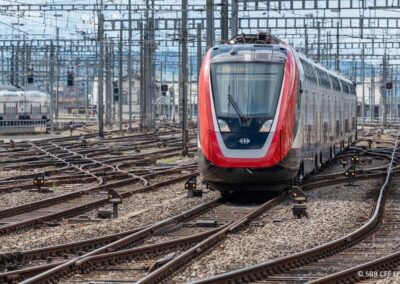
Partial revision of SBBG: responsibility and market liberalisation further delayed
The Committee for Transport and Telecommunications of the National Council (KVF‑N) unanimously supports the proposal for the financial stabilisation of the Swiss Federal Railways (SBBG). In contrast to the Federal Council, it is of the opinion that there is no need to change the system for granting vault loans to SBB. In doing so, the KVF‑N also disregards all of the VAP’s recommendations.
This is the issue:
- 3 billion financial injection for SBB
- SBBG partial revision referred to the National Council
- The industry’s voice remains unheard
- Still no market liberalisation in sight
3 billion financial injection for SBB
In its report of 16 December 2022 on motion 22.3008 «Supporting the implementation of SBB investments and a long-term vision in Covid-19 times», the federal government proposes to cover SBB’s deficits in long-distance transport with a one-off capital injection of an estimated CHF 1.25 billion. It also wants to ease the track access charges for long-distance transport with a further CHF 1.7 billion. It is also proposing a revision of the financing instruments.
SBBG partial revision referred to the National Council
The KVF‑N has unanimously referred the bill to amend the SBBG to the National Council. The majority of the committee also rejects a change in the system of financing instruments, as budget loans, unlike treasury loans, are subject to the debt brake. It is of the opinion that the resulting competitive situation with other federal expenditure is not desirable with regard to public transport services. The National Council will decide on the KVF‑N proposal in the 2023 winter session.
Voice of the industry remains unheard
As published in our media release of 30 March 2023, we at the VAP reject the proposed extraordinary restructuring of long-distance transport with around 3 billion taxpayers’ money. On the other hand, we welcome the proposed correction of the financing instruments, i.e. the waiver of the granting of vault loans to SBB bypassing the federal debt brake. In the blog posts «SBB should take responsibility instead of a CHF 3 billion financial package» and «No stabilisation of SBB despite CHF 3 billion in additional federal funds», we summarise the industry’s position and our corresponding arguments.
Still no market liberalisation in sight
If the bill is accepted, the National Council would further consolidate the SBB monopoly in long-distance transport. This is problematic in terms of European policy, as the EU is demanding that Switzerland open up the long-distance transport market. This unfulfilled demand overshadows the negotiations with the EU on the extension of the temporary cooperation with the European Railway Agency ERA for one-stop-shop authorisations and more interoperability between Switzerland and the EU. Compared to EU member states, Switzerland does not yet have full market access; the Swiss railway network is currently not an integrated part of the European interop network. For this reason, the freight transport-related associations Astag, CFS and we at the VAP are calling for a national migration strategy to open up the market in line with the EU. If the National Council votes in favour of the KVF‑N motion, it will push this issue even further away.
Addendum 20.12.2023, update from the winter session:
In the winter session, a majority of the National Council agreed to grant the Swiss Federal Railways (SBB) a one-off capital subsidy of CHF 1.15 billion to reduce debt. This amount was already included in the 2024 budget. In contrast, the National Council rejected the Federal Council’s proposal to switch from treasury loans to federal budget loans when a certain level of debt is reached. This was based on the argument that applying the debt brake to budget loans could delay the expansion. The chamber also decided to set the appropriate reserve for the railway infrastructure fund (BIF) at a minimum of CHF 300 million, with a maximum of two thirds of the net revenue from the performance-related heavy vehicle charge (LSVA) flowing into the fund. The National Council has thus ignored all of the VAP’s recommendations. The bill now goes to the Council of States, which will hopefully take corrective action.

Gotthard Base Tunnel (#8): Safety and control tasks clearly distributed
- Harmonised safety in the European rail freight system
- Maintenance work monitored by independent bodies
- Wheelset inspections in operation and maintenance
- Two inspection procedures established
- Responsibilities and regulations clarified
Harmonised safety in the European rail freight system
Safety in the European rail freight system is based on a triangle of responsibility consisting of infrastructure managers, railway undertakings (RUs) and wagon keepers with their responsible maintenance centres (ECMs). The specifications and regulations are now largely harmonised throughout Europe. The industry has developed the internationally recognised VPI European Maintenance Guide (VPI-EMG) based on the provisions of the sovereign directives, the applicable technical standards and practical experience. The VPI (Germany), V.P.I. (Austria) and VAP (Switzerland) associations have been pioneering this work since 2007. In 2019, AFWP (France) and UIP (International Union of Wagon Keepers, representing the smaller national interest groups) were added to the group of editors of the VPI-EMG. This set of rules defines both deadlines and the scope of work and standards in a user-friendly manner. It provides maintenance recommendations that each user must check for applicability to their freight wagons, supplement if necessary and approve for their wagon fleet. More than 550 companies, including wagon keepers, ECMs, repair workshops, authorities and universities, currently use the VPI-EMG. More than 260 repair workshops and mobile service teams from 19 European countries use the VPI-EMG on behalf of the relevant ECM.Maintenance work monitored by independent bodies
The EU safety directive defines two independent procedures. This is to ensure that the specialised work is carried out everywhere with the required level of quality and knowledge:- Certification: The companies involved must be certified by independent bodies for security-related activities within the scope of their ECM. They must regularly renew these certificates and allow their customers to view their validity and scope.
- Auditing: Supervisory authorities carry out risk-based audits of safety-critical processes and quality inspections in railway operations. If they uncover weaknesses, they also monitor their rectification.
Wheelset inspections in operation and maintenance
Wheelsets are considered safety-critical components of a rail vehicle. They are subject to continuous wear during operation and can also be damaged by external influences. When maintaining wagons, the ECM ensures that fully functional wheelsets are used. During operation, the RUs and the train control systems of the infrastructure managers (see blog post «Gotthard Base Tunnel (#2): Automatic train control systems») specifically ensure that no recognisable damage or deviations on wagons jeopardise operational safety. To ensure safe railway operations, the wheelsets must comply with all relevant limit values during the entire operating time. Wheelsets that have been replaced due to deviations or damage are sent to a certified specialist workshop for reconditioning in accordance with the regulations.Two test procedures established
The SRF news report shows two test procedures for systematic wheelset maintenance. A certified specialist workshop can thus ensure that the wheelsets it repairs do not show any relevant damage in the form of material cracks on delivery. This involves two non-destructive testing methods in accordance with DIN 27201–7, which have become established throughout the industry:- Ultrasonic testing: Detection of cracks in the wheel face and flange back area
- Magnetic testing: Detection of cracks in the wheel centre and wheelset shaft including wheel seat
Responsibilities and regulations clarified
As many goods are transported across borders, internationally harmonised rules and procedures are important in Europe. In recent years, the regulations have been comprehensively updated and improved. Current versions of the EU Safety and Interoperability Directive apply both in all EU states and – via the overland transport agreement – to the Swiss standard gauge network. Based on this, the Swiss railway sector has developed practical standards and maintenance procedures for the main players. Europe-wide common reporting processes and assessment procedures (see blog post «Gotthard Base Tunnel (#7): Sust report provides clarity») ensure that industry players learn their lessons from an operational incident such as that of 10 August 2023 and implement effective improvements in maintenance.
Revision of the noise limits
That’s what it’s all about:
- Silence is a precious commodity in densely populated and industrialised areas
- Federal government has issued regulations on noise abatement
- FOEN mandated to review existing regulations
The Confederation has issued regulations on noise abatement that lay down framework conditions for industry and transport in particular. The Federal Office for the Environment (FOEN) was mandated by Parliament to review the existing regulations. In the current year, the FOEN is conducting a comprehensive economic assessment (VOBU) of nine possible measures, analysing their noise-reducing effect and economic consequences in connection with traffic noise. The regulations for the construction and licensing of vehicles and aircraft are to continue to be coordinated internationally. The FOEN aims to present the findings transparently to important representatives from industry and the cantons and to discuss implications with them.
The Association of the Freight Industry (VAP) will be actively involved and contribute the industry’s perspective. The FOEN will complete the VOBU by the end of 2023 and the Federal Department of the Environment, Transport, Energy and Communications (DETEC) will decide on the further procedure and publish this at the beginning of 2024. We will report on new findings here.
The following focal points are considered:
- Adjustment of the limit values for road, rail and air traffic noise
- Adjustment of the assessment period (rest period)
- Standardisation of the sensitivity levels
- Simplification of the noise classification regime (restriction of the protection of existing buildings)
- Dynamisation of noise protection (temporary relief)
- Clarification of measures (definition of test criteria)
- Strengthening transparency (disclosure of relief)
- Strengthening of the polluter-pays principle (compensation for advance payments)
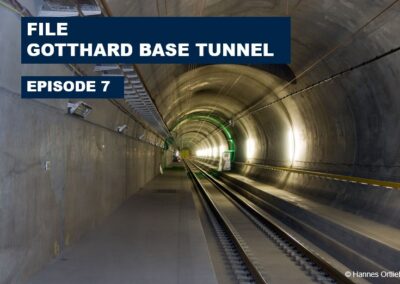
Gotthard Base Tunnel (#7): Sust report creates clarity
On 28 September 2023, the Swiss Safety Investigation Authority (Sust) published its interim report on the derailment of the goods train in the Gotthard Base Tunnel. In it, it documents the course of the accident and makes initial safety recommendations. The event is now being processed by the responsible international committees. Both the European railway industry and Switzerland are represented here. The report should not be misused for a national go-it-alone.
This is what it’s all about:
- Fatigue cracks caused wheel breakage
- Further investigation is well concerted
- Consequential initial safety recommendations
- Accident clarified – but not yet completely solved
Fatigue cracks caused wheel breakage
Fortunately, Sust submitted its interim report very quickly. In it, it identifies the broken wheel disc of the eleventh freight wagon as the cause of the derailment in the Gotthard Base Tunnel. The wagon is registered in Sweden. The damaged wheel is wheel type BA 390 with LL brake pads. All the fractured surfaces show fatigue cracks originating from the tread. They are now the subject of in-depth metallographic examinations by Sust. The Sust report contains no evidence of pre-existing operational defects that could have caused derailment.
Further investigation is well concerted
The incident is now being dealt with by the Joint Network Secretariat (JNS). The aim of this body is an EU-wide harmonisation of all measures taken after an accident or incident in European rail transport. The JNS supports the European Railway Agency (ERA) in organising the exchange of experience between national supervisory and investigative authorities and the industry organisations accredited to ERA. The latter also include the three players in the triangle of responsibility for rail transport: the infrastructure manager (responsible for the infrastructure), the wagon keeper (responsible for the maintenance of the wagons) and the freight railway (responsible for the operation of the wagons). At the same time, Sust triggers a so-called Safety Alert in the SIS information system, which is used by the national supervisory and investigative authorities. And finally, the Swedish wagon keeper deposits a warning message in ERA’s Safety Alert IT Tool (SAIT).
Based on these notifications and as part of the coordinated process, all European stakeholders should have access to the published information. It is now up to them to draw the right conclusions in the exchange between national authorities, industry representatives and ERA. Thanks to the Land Transport Agreement, Sust is recognised by ERA as an investigative body, as is the Federal Office of Transport (FOT) as a safety authority. The matter is now being dealt with by the competent international bodies. We consider this fact to be entirely correct and necessary in view of the cross-border use of freight wagons throughout Europe. The responsible bodies will next establish a reference to similar wheel breakages from the past.
Consequent first safety recommendations
The Sust report makes two short-term safety recommendations, which the VAP supports without reservation. In Recommendation No. 183, it advocates that the FOT extend the 2017 “JNS Urgent Procedure Broken Wheels” to the BA 390 series wheelsets. The “JNS Task Force Broken Wheels” set up at that time had reacted to several wheel fractures on the BA 314 and BA 004 wheel types and called for more intensive inspections in operation and maintenance to limit the risks for these wheel types. We also welcome Safety Recommendation No. 184, in which Sust urges the FOT to apply for a new “JNS Procedure” at European level to deal with the wheel breakage on the BA 390 series. This should prevent further similar wheel breakages from occurring.
Accident clarified – but not yet completely solved
The interim report corrects the misleading media coverage of the accident, according to which the derailed wagon 11 also damaged the safety gate to the east tunnel, which weighed about 100 tonnes. According to Sust, it was not until carriage 14 hit the deflecting track at the Faido multifunction station switch that it struck the safety gate. Further investigations are necessary to fully clarify the accident in detail. This includes, for example, analyses of the deflected wagon 14 and the switch. Sust will only provide a complete clarification of the course of events and causes of the accident in its final report. Once this has been published, it is the responsibility of all actors involved in the JNS procedures to draw the right conclusions from it for competitive and safe European rail transport. The recommendations of the Sust final report will be implemented by the entire industry.

Marco Rosso: «Collaborative innovation can contribute to the quality of life and function profitably at the same time.»
Marco Rosso is Chairman of the Board of Directors of Cargo sous terrain AG (CST). In an interview with the VAP, he talks about interoperability, non-discrimination on the last mile and the logistics of the future. And about how collaborative innovation can contribute to the quality of life of people in Switzerland and function profitably at the same time.
VAP: Mr Rosso, how do you see the relationship between rail freight and CST in the future?
Marco Rosso: Rail and CST are two systems that complement each other. CST cooperates with all modes of transport to jointly absorb the predicted freight traffic growth of over 30% by 2050 in an innovative, sustainable way. Because CST is not suitable for all transports, the company supports the business models of rail, road hauliers and other logistics players with new technology and digitalisation. Only with cooperation (within the framework of competition rules) can interoperability be guaranteed among the most diverse modes of transport and transport companies. Therefore, CST plans to connect to rail, road, ship, air freight and other systems. At the CST hubs, there will be multimodal connections, in particular also a rail connection. In the construction phase, starting as early as 2026 and continuing until 2045, CST will use rail transport to the tune of 2,000 goods trains per year and thus become an important rail customer.
Shouldn’t the state create the infrastructure and the operation in the tunnels, as well as the operation of the terminals and the last/first mile would then be free and subject to competition?
CST is a system that only works as a whole because all processes are controlled end-to-end. This is the only way to ensure that the general cargo reaches its destination on time and reliably. For this reason, the system must be managed from a single source and at the same time be connectable to all partner platforms. CST has been planned and conceived as a private-sector project from the very beginning. With this financing concept, it is possible and important to move forward quickly without straining the funds in the federal budget. The investors also include important future customers. They help to develop the system in line with the market. The Confederation has recognised that it would not be expedient to act as a creator itself, but to limit itself to the legal framework. With carefully prepared business plans, competitive prices and the broad investor base that supports the project, CST shows that innovation in freight transport contributes to the quality of life in cities and rural areas and can function profitably at the same time.
Where do you see the biggest challenges in your project?
Such a comprehensive project presents many challenges, for example in planning, legal, environmental, financial and political terms. What distinguishes CST is the model of collaborative innovation – with the inclusion of all stakeholders. The project approaches the challenges pragmatically in stages.
How do you design a non-discriminatory first/last mile?
Our system is planned to be non-discriminatory from the start anyway, without the law requiring it. The following applies throughout: everyone has access to the system with the same price for the same service. But we go even further, for example, by developing CST’s city logistics in a collaborative partnership and are open to any cooperation with smaller as well as larger partners, including the railways and the post office. Here, too, our principle is collaborative innovation, which we live by every day.
What is the greatest benefit or motivation of CST for the Swiss population?
The most important effect of CST will be to increase the quality of life for all inhabitants of Switzerland. By showing a way how the logistics of the future can look sustainable, how heavy traffic on the road can be moved away by bundling and pre-sorting in tunnels for all shippers, or how a traffic jam can be avoided for the supply of goods, how to get the best out of the available resources in terms of CO2 emissions, noise, etc. The precious space on the surface should primarily belong to the population. CST favours the expansion of infrastructure as well as renewable energies in Switzerland. CST is a privately financed driver of innovation for the benefit of the Swiss economy and for quality of life in cities and villages by guaranteeing security of supply and thus increasing prosperity in Switzerland.
Are there any points that you think we should still let our members know about?
There are decisive decisions and discussions ahead, especially against the background of the political debates on freight transport. We are firmly convinced that with an entrepreneurial attitude we can make an effective contribution to maintaining Switzerland in the 21st century as an excellent business location with a high quality of life, also for future generations. We participate in this work with enthusiasm and commitment.
Mr Rosso, thank you very much for the interview.
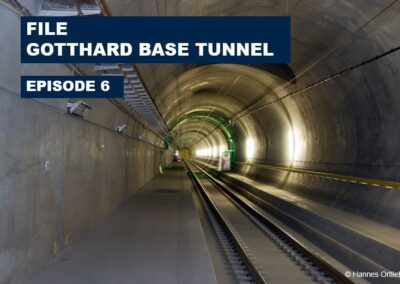
Gotthard Base Tunnel (#6): FOT pragmatically supports freight traffic
After the freight train accident in the Gotthard Base Tunnel, the Federal Office of Transport (FOT) is promoting rail freight transport with gripping measures: The tunnel may only be used for goods trains. The compensation per train driven in unaccompanied combined transport (UCT) will soon be increased to up to CHF 1,100. We, as the association of the shipping industry, would like to express our sincere thanks for this. By the way: our vote also applies to foreign shippers.
This is what it’s all about:
- Gotthard base tunnel only open for freight railways
- Higher compensation for transalpine UCT
- The VAP says thank you
Gotthard Base Tunnel open for freight trains only
Since the reopening of the east tunnel of the Gotthard base tunnel, it has been available exclusively for freight traffic. Around 100 train paths are possible every day. A further 30 trains per day run through the mountain section. This means that transalpine rail freight traffic has a total of 130 train paths at its disposal every day. By comparison: in 2022, an average of 120 trains crossed the base tunnel every day.
Thanks to this measure, the freight railways can handle rail freight traffic practically without restrictions. Admittedly, the routing over the mountain route is associated with considerable additional expense. But it mainly affects domestic traffic that is not dependent on the 4‑metre corridor.
Higher compensation for transalpine UCT
The FOT is committed to transalpine rail freight traffic and in particular transit traffic (see “The FOT strengthens rail freight traffic through the Alps”). The compensation per train travelled in UCT will be increased by CHF 200 to up to CHF 1,100 in the coming weeks. The FOT also does not want to reduce the compensation per consignment for 2024, but will introduce a symbolic reduction from CHF 1 to CHF 57 per consignment. In this way, the FOT is supporting transalpine UCT in a very pragmatic way. Against the background of the difficult construction site situation on the access routes and the tense economic situation, the FOT is refraining from continuing the previous reduction path for compensation in UCT.
The VAP expresses its thanks
The FOT deserves a big thank you for this pragmatic support. It strengthens the efforts of the entire industry to make the capacity restrictions on both the Gotthard and Lötschberg axes as bearable as possible in a targeted manner and by joining forces. We see it as a sign of a joint shift policy in transit traffic.
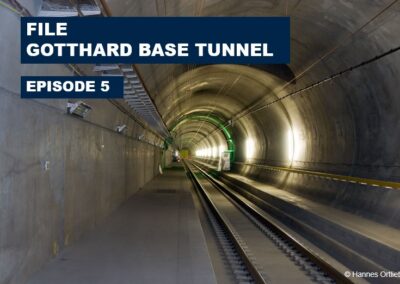
Gotthard Base Tunnel (#5): Too early to assign blame and liability
According to the main edition of the SRF Tagesschau news programme from 27 August 2023, the Federal Office of Transport (BAV) views SBB Cargo as solely liable for the consequences of the freight train accident in the Gotthard Base Tunnel. The programme made reference to an oversight of the rail reform; prior to this, all freight wagons had to be sent to the Federal Railways for maintenance. We believe: It is too early for speculations, and certainly not in media with a nationwide audience. Such polemic does not help solve the problem in any way whatsoever. Only the report of the Swiss Transportation Safety Investigation Board (Sust) will establish clear facts – and create opportunities to respond appropriately.
Topics discussed:
- The state retains the upper hand in the rail market
- The rail reform did, in fact, reform liability law
- Wagon keepers are liable independent of fault
- Federal Council did not propose any legal changes
- Contractual provisions are public
- Responsibility must be assigned based on the Sust report
- Current liability rules are economically balanced
- Negative consequences of legal changes must be considered
The state retains the upper hand in the rail market
The federal government clearly assigns responsibility for the freight train accident in the Gotthard Base Tunnel to the SBB subsidiary SBB Cargo. A spokesperson for the BAV indicated on SRF Tagesschau on 27 August 2023 that the applicable liability law originates from the time of the Federal Railways. However, the times have not changed. The Swiss Federal Railways, SBB, still dominate the rail freight market. Only a few weeks ago, the Federal Council approved the renationalization of SBB Cargo. In response to the interpellation by FDP National Council Member Christian Wasserfallen, the Federal Council made clear that the private shareholders had not improved the (financial) situation of SBB Cargo.
The rail reform did, in fact, reform liability law
In the course of the rail reform, the international Convention Concerning International Carriage by Rail (COTIF) was amended to create a separation between infrastructure and operations. At the same time, SBB Cargo terminated the siding contracts. The monopoly privilege, which required that freight trains be sent to the Federal Railways for maintenance, was hereby abolished. Instead, the conditions for use of the freight wagons were standardised between the freight railway undertakings and the wagon keepers at the international level on the basis of COTIF in the form of a contract entitled the “General Contract of Use for Wagons (GCU)”. COTIF and the GCU set out more stringent liability rules than are preferred by the BAV with its reservations against internationally uniform industry solutions. Wagon keepers were in for an unpleasant surprise as they took over full responsibility for the future maintenance of their wagons: The SBB provided the wagon keepers with extremely sparse documentation on the condition and maintenance of their freight wagons by SBB Cargo up to the termination of the siding contracts. Since then, the wagon keepers have themselves been responsible for their wagons and have cleaned up the legacy from SBB.
Wagon keepers are liable for deficiencies on their wagons
With his comments on SRF Tagesschau, the BAV spokesperson gave the impression that private freight railway undertakings or wagon keepers are not liable for accident damage. This is not true. European and Swiss freight railway undertakings and wagon keepers have been liable since 2006, when the GCU was established, and these rules were further intensified in 2017. Today, freight railway undertakings are fundamentally liable for damages from accidents involving freight trains on the Swiss rail network regardless of their own culpability (strict liability). If the damages were caused by deficiencies on a third-party wagon, culpability is contractually assumed to lie with the respective wagon keeper. The freight railway undertaking involved can take recourse against the wagon keeper. The latter can only free itself from liability with respect to the freight railway undertaking by proving it was not at fault (reversal of the burden of proof). You can read more about this in our blog post “Gotthard Base Tunnel (#3): Current liability provisions are sufficient”.
Federal Council did not propose any legal changes
SRF news editor Christoph Leisibach stated that the Federal Council issued a report proposing measures for adapting the liability law, such as by increasing the liability of the wagon keepers. This statement is incorrect. In the BAV report from 21 June 2023 addressing postulate 20.4259 “Overall assessment of liability in rail freight transport”, the Federal Council presented options but explicitly declined a modification of the regulations.
Contractual provisions are public
Professor Frédéric Krauskopf was consulted by SRF Tagesschau as an expert. When asked whether SBB Cargo could assert (co-)liability on the part of the wagon keeper of the damaged wagon, Krauskopf referred to the contract between the two parties. As explained above, the relevant contract is the GCU. This contract is publicly available; in other words, it is also accessible to professors and public television networks. The GCU was adopted unanimously by SBB Cargo along with all other national railways in Europe.
Responsibility must be assigned based on the Sust report
We at VAP are intensively examining the question of who bears what fault for the freight train accident on 10 August 2023 and who must accept liability. This can only be answered precisely and within a reasonable timeframe after the Sust report is available.
Current liability rules are economically balanced
The wagon keepers must ensure that their wagons are approved and maintained according to the correspondingly applicable laws, regulations and binding standards. The freight railway undertakings accept the wagons in the trust that the wagon keeper has lived up to these obligations. They carry out all necessary inspections to ensure that the train can travel safely. The wagon keepers have no influence on the train departure. The freight railway undertakings independently decide on the type and manner of the inspections since they are also solely responsible for the operation of the train. It therefore makes economic sense for the freight railway undertakings to be primarily liable for their inspections prior to train departure and for possible consequences. If it is later determined that a deficiency on a wagon was the cause of the damage (such as in the case of wheel failure), the wagon keeper is liable to the freight railway undertaking for the resulting damages. This is the case unless the wagon keeper can prove that it is not responsible for the deficiency (reversal of the burden of proof). In road transport, the liability between the keeper of the tractor vehicle and the keeper of the trailer is regulated in exactly the same way.
Negative consequences of legal changes must be considered
An intensification of the already highly detailed liability provisions will not make rail freight any safer nor will it bring a single additional freight train onto the rail network. On the contrary. Whatever might be changed in the liability rules would have market consequences, such as in the form of higher leasing rates for freight wagons and, above all, more complicated and labour-intensive wagon handoffs from one area of responsibility to the next. This means that a poorly conceived, unilateral change in Swiss law could bring a sudden stop to the free access to 550,000 freight wagons from all over Europe that is guaranteed today by the GCU – to the detriment of the environment as well as the Swiss economy.






